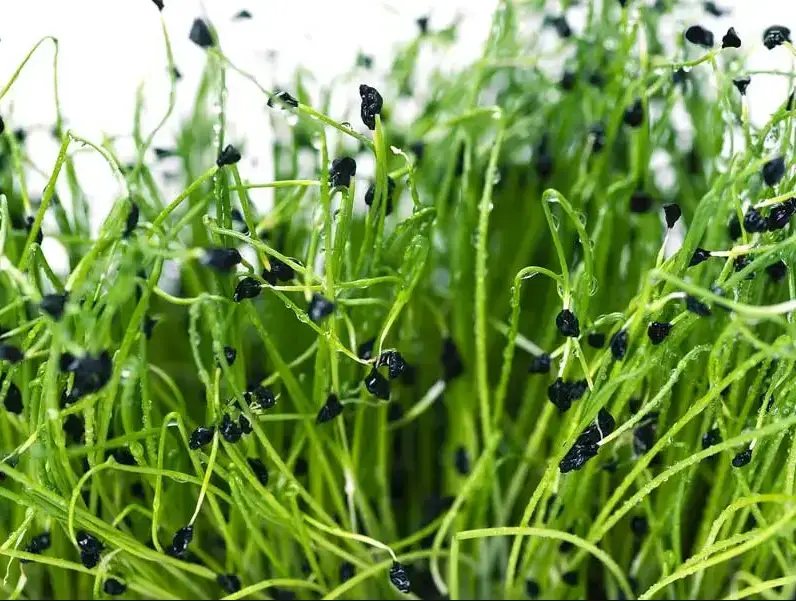How to harvest and store microgreens for optimal freshness

Introduction
Microgreens are young, tender plants harvested at the early stages of growth, typically between 7 to 14 days after germination. They are packed with nutrients and flavours, making them popular for garnishing dishes, salads, and sandwiches. To enjoy the full benefits of these tiny powerhouses, it is essential to know how to harvest and store them properly.
This article will guide you through harvesting and storing microgreens for optimal freshness.
Timing the Harvest
The ideal time to harvest microgreens is when they have developed their first set of true leaves, usually 7 to 14 days after germination. These true leaves will look different from the initial cotyledons or seed leaves that emerge from the seed. Harvesting at this stage ensures that the microgreens are at their peak in terms of flavour, texture, and nutritional content.
It is best to harvest microgreens in the morning when the temperature is cool and the plants have had ample time to replenish their moisture content after a night of rest. Harvesting at this time helps to maintain optimal freshness and reduces the risk of wilting during storage.
Preparing for Harvest
Before you begin the harvesting process, ensure that you have clean, sharp scissors or a knife to cut the stems of the microgreens. This will help minimize damage to the plants and reduce the risk of bruising, which can impact their quality and shelf life. Additionally, gather a clean, dry tray or container to collect the harvested microgreens.
It is also essential to wash your hands thoroughly before handling the microgreens to minimize contamination. Wear disposable gloves to reduce the risk of transferring contaminants to the plants if possible.
Harvesting the Microgreens
To harvest microgreens, follow these steps:
a. Hold a small bunch of micro greens gently between your fingers, ensuring not to crush or bruise the delicate leaves and stems.
b. With the other hand, use scissors or a knife to cut the stems just above the soil line. Be careful not to disturb the growing medium, as this can introduce dirt or contaminants to the harvested greens.
c. Place the cut microgreens in your collection tray or container. Continue harvesting small bunches until you have gathered all the microgreens you need.
d. Once the harvesting is complete, discard any damaged, discoloured, or wilted leaves.
It is worth noting that some microgreens, like pea shoots and wheatgrass, can be harvested more than once. Cut the stems slightly higher, about 2 to 3 centimetres above the soil line. This will allow the plants to regrow and produce a second harvest.
Washing and Drying the Microgreens
After harvesting, it is crucial to wash the microgreens gently to remove any dirt, dust, or contaminants that may be present. To do this:
a. Fill a clean basin or large bowl with cold water.
b. Immerse the harvested microgreens in the water and gently swirl them around to dislodge any debris.
c. Lift the microgreens out of the water and allow the excess water to drain off.
d. Repeat this process two or three times, using fresh water each time, until the water remains clear and debris-free.
Once the microgreens are washed, they must be dried thoroughly to prevent mould and bacteria growth during storage. You can use a salad spinner to remove most of the water or lay the microgreens on a clean, dry towel and gently pat them dry. Be sure to handle the microgreens delicately to avoid bruising or damaging the leaves and stems.
Storing the Microgreens
Proper storage is crucial for maintaining the freshness and quality of your harvested microgreens. Follow these steps to ensure optimal storage conditions:
a. Choose the right container: Select a clean, airtight container with a lid, preferably glass or food-grade plastic. This will help maintain the microgreens’ ideal humidity and temperature conditions and prevent mould and bacteria growth.
b. Line the container: Place a clean, dry paper towel or a piece of unbleached parchment paper at the bottom of the container. This will help absorb excess moisture and prevent the microgreens from becoming soggy.
c. Layer the microgreens: Gently arrange the washed and dried microgreens in a single layer on top of the paper towel or parchment paper. If you need to store a large number of microgreens, you can create multiple layers by placing another sheet of paper towel or parchment paper between each layer of greens.
d. Seal the container: Close the lid tightly to create an airtight seal, ensuring no air or moisture can enter or escape the container. This will help maintain the freshness of the microgreens and prolong their shelf life.
e. Store in the refrigerator: Place the sealed container in the refrigerator, ideally in the crisper drawer, designed to maintain the optimal humidity and temperature for storing fruits and vegetables. Microgreens should be stored at 2 to 5 degrees Celsius for optimal freshness.
Shelf Life and Usage
Most microgreens can last up to 7 to 10 days in the refrigerator when stored correctly. However, more delicate varieties like basil and cilantro may have a shorter shelf life. You must check your microgreens regularly for any signs of spoilage, such as mould, sliminess, or off-odours.
To enjoy the best flavour and nutritional benefits, consume your microgreens as soon as possible after harvesting. They can be used in various dishes, including salads, sandwiches, and wraps, and as a garnish for cooked meals. Microgreens can also be blended into smoothies or juices for a nutrient-packed beverage.
Freezing Microgreens
If you have a large harvest of microgreens and cannot consume them all within their shelf life, you can freeze them for later use. To freeze microgreens, follow these steps:
a. Ensure the microgreens are thoroughly washed and dried, as described in the earlier sections.
b. Spread the microgreens in a single layer on a baking sheet lined with parchment paper.
c. Place the baking sheet in the freezer for several hours or until the microgreens are entirely frozen.
d. Transfer the frozen microgreens to airtight, freezer-safe containers or resealable plastic bags. Be sure to label the containers or bags with the type of microgreens and the freezing date.
e. Store the frozen microgreens in the freezer for up to 3 months.
Remember that freezing may alter the texture of the microgreens, making them less suitable for use in salads or as garnishes. However, frozen microgreens can still be used in smoothies, soups, or cooked dishes, where the change in texture will be less noticeable.
Conclusion
Harvesting and storing microgreens for optimal freshness involves careful timing, gentle handling, and proper storage techniques. Following the steps outlined in this article, you can enjoy the full flavour and nutritional benefits of these nutrient-dense greens. Whether using them as a garnish or incorporating them into your favourite dishes, microgreens are a versatile and delicious addition to any meal.
Disclaimer
The information provided in this article is for educational and informational purposes only and is not intended as medical advice. It is not a substitute for professional medical advice, diagnosis, or treatment. Always seek the advice of a qualified healthcare provider with any questions you may have regarding a medical condition. The author and publisher of this article are not responsible for any adverse effects or consequences resulting from the use of any suggestions, preparations, or procedures described in this article.

